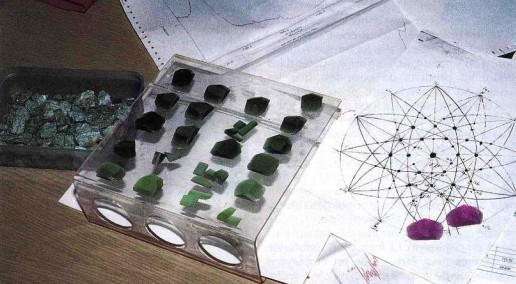
Zircon Showing Asterism
first published in Facette 22 (February 2016)

Martin Steinbach, a collector of star stones from Idar-Oberstein (Germany), submitted to the SSEF a zircon with a star effect (asterism), which – to the knowledge of the author – so far
had not been described in literature for this gem.
The zircon specimen (13 ct) revealed a moderate star with four intersecting branches, of which one was very weak, thus resulting in a six to eight rayed star depending on illumination. The zircon was quite included and thus rather translucent. In addition to this, the centre of the star was further pronounced by bright reflections on planar micro-features from the overhead light source. The most intense branch (Figure 1) of the star is due to a set of very fine short tubes, whereas the three weaker branches are caused by three sets of oriented micro-features. Due to the highly included nature of the specimen, the crystallographic orientation of the observed microstructures could not be determined.
Raman micro-spectroscopy of the inclusion features revealed no Raman peaks except of zircon, so they are interpreted as micro-fissures or a different type of microstructure. Based on the similarity of these complex micro-structures to the ones described by Hänni and Weibel (1988) for heated cat’s-eye zircon, it seems probable that the star effect in this specimen is also the result of a heating process. This is supported by the Raman spectrum of this zircon, which is characterised by very sharp and pronounced vibrational peaks, as it would be expected in metamict and translucent zircons only after heat treatment (Zhang et al., 2000; Nasdala et al., 2002; Wang et al., 2006; Krzemnicki, 2010) or in well-crystallized (non-metamict) and commonly transparent zircons.
See also: Krzemnicki M.S. and Steinbach M.P., 2015. Gem Notes: Zircon showing asterism. Journal of Gemmology, 34(8), 671-673.


